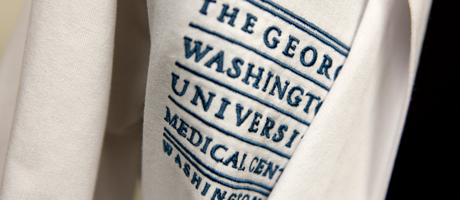The National Institutes of Health (NIH) has awarded The George Washington University Medical Center a $15-million grant to renovate approximately 25,000 square feet in the center’s main building, Ross Hall, to create a new, state-of-the-art Research Center for the Neglected Diseases of Poverty.
The NIH grant will be used to provide critical infrastructure to support research for the development of new vaccines, therapeutics and diagnostics for “neglected infections of poverty” (NIoPs) in poor communities in the United States and “neglected tropical diseases” (NTDs) in developing countries, especially for children, who are the most vulnerable to these diseases.
This new center is a multidisciplinary initiative, spearheaded by faculty in GW’s Department of Microbiology, Immunology and Tropical Medicine. For the first time, basic science, translational research, public health, clinical activities and public policy will be brought together in an interactive framework to launch a coordinated assault on these diseases, many of which are often ignored in national and international efforts to eradicate certain infectious diseases in poor communities.
NIoPs in the United States have been recognized as one of the greatest health disparities that affect people who live in the poorest, often isolated areas of the country, such as Mississippi, Louisiana and the Appalachian mountains, where health care is often inadequate. NTDs are the most common infections afflicting the “bottom billion” - the poorest people in the world, who live on less than a dollar a day.
“The NIH funds for this initiative will transform biomedical research and enable us to expand critical areas of much-needed clinical care and policy work in the field of NIoPS and NTDs,” says John F. Williams, M.D. ’79, Ed.D. ’96, provost and vice president for health affairs at the medical center. “The GW Medical Center will make major contributions to preventing and curing diseases, especially among children, in poor, often desperate communities in our country and around the world. We are grateful for the NIH’s support.”
“This award is a recognition by the NIH of the high-quality research at GW in the field of neglected diseases, and with the renovations made possible by this grant, we have the potential of becoming an international leader in this important field of biomedical research,” says Leo Chalupa, vice president for research at GW.
The initiative will create or maintain American jobs for physicians, scientists, construction workers and facilities staff at GW, as well as new employment opportunities for architects, engineers and trade workers. The GW Medical Center and the main GW University will implement an intensive program to hire talented under-represented minorities and those from disadvantaged backgrounds in the District of Columbia. They also will seek certification from the U.S. Green Building Council’s Leadership in Energy and Design (LEED) for the research complex renovation.
“Americans must understand that the poorest parts of our nation--including the Mississippi Delta, our inner cities, the border with Mexico, and Appalachia--have high rates of parasitic and related infections,” said Peter Hotez, distinguished research professor of microbiology, immunology and tropical medicine at the GW Medical Center. Dr. Hotez, an internationally recognized expert, will serve as the center’s scientific director. “The NIoPs in the United States, like the NTDs overseas, occur in the setting of poverty and actually trap people in poverty because they are often too sick to work or attend school. For both the NTDs and the NIoPs, we intend to develop new vaccines, diagnostics and drugs to treat these diseases and, over the long term, help lift these people out of poverty and enable them to lead more prosperous lives,” Dr. Hotez says. In addition to product development, the center will address fundamental aspects of molecular and cellular biology and immunology of the pathogens that cause NTDs and NIoPs.
GW’s School of Medicine and Health Sciences and School of Public Health and Health Services work together to combat neglected diseases through fundamental NIH-sponsored research on hookworm, schistosomiasis, opisthorchiasis and toxoplasmosis, as well as epidemiological and policy work. GW is home to the laboratories of the Human Hookworm Vaccine Initiative, a product development partnership with Sabin Vaccine Institute funded through support from the Bill & Melinda Gates Foundation. The project is currently transitioning new vaccine antigens for hookworm and schistosomiasis from discovery to Phase 1 clinical trials. The first, open-access journal on neglected diseases, PLoS Neglected Tropical Diseases, is also hosted by the GW Medical Center.
The project described was supported by Award Number 1C06RR030112-01 from the National Center For Research Resources. The content is solely the responsibility of the authors and does not necessarily represent the official views of the National Center For Research Resources or the National Institutes of Health.
The NIH funds for this new center are part of the American Recovery and Reinvestment Act.


